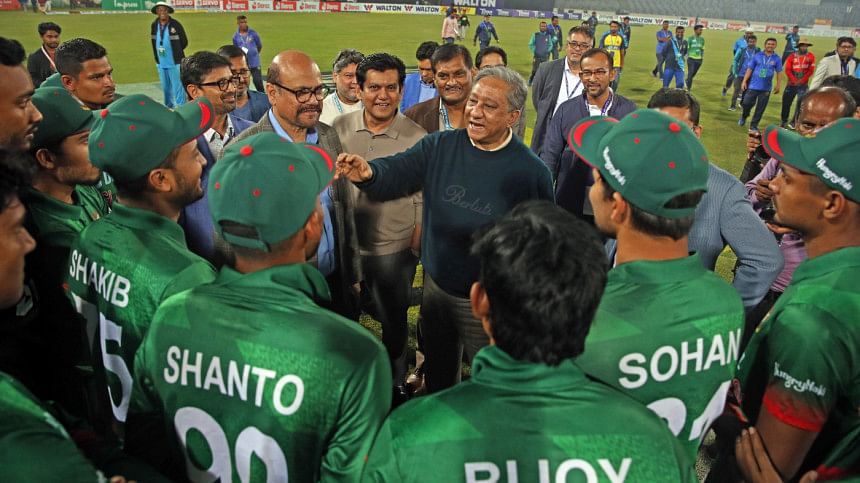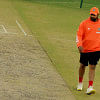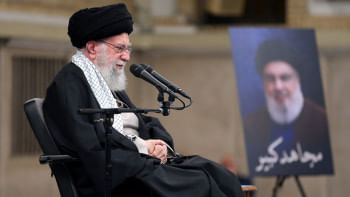Mirpur: A poisoned chalice

After the Sri Lanka cricket team returned to the country following a disastrous World Cup campaign where they only won two matches and finished ninth, consequently missing out on a spot for the 2025 Champions Trophy, the team was greeted with heavy criticism from all quarters.
One man from the team management, though, fronted the media with his reasoning of what had led to the debacle and the continuous downfall of the once world champions over the last few years.
Mahela Jayawardene, the Sri Lanka team's consultant coach, expertly explained to the media, in the presence of the players and head coach, that the downfall was more owing to the pitches that Sri Lanka Cricket prepares at home than any lack of talent or skill of the current generation.
It was an interesting evaluation from one of world cricket's brightest minds, and it brought into focus an issue which is as relevant for Sri Lankan cricket as it is for Bangladesh cricket.
Bangladesh's World Cup campaign was as disastrous as Sri Lanka's, with off-field controversies and on-field woes going hand-in-hand right from the build-up to the end of the marquee event.
While fingers may be pointed at the captain, coaching staff, and even the selection panel – and perhaps rightly so too – the role that the substandard pitches in Bangladesh, particularly in Mirpur, have played in the debacle may remain a peripheral issue.
It is a topic which is conveniently swept under the carpet whenever there is an uproar following debacles in global events on the back of some home series wins.
What makes Mirpur so critical in this discussion is the fact that this venue is historically renowned for offering slow and low bounce, which often troubles touring teams, who more often than not, are used to playing on sporting wickets and find it hard to cope with the nature of the wickets in Mirpur.
Remember what happened to Bangladesh in the 2021 Twenty20 World Cup after the team went into the tournament with a world of confidence following historic series victories in Mirpur over Australia and New Zealand?
There was criticism over the kind of pitches that had been dished out for those two important series and the looming disaster those had set the team up for. Even Shakib Al Hasan had said in an interview that playing on such pitches could destroy career of batters.
But that was that. No lessons seemed to have been learnt from that episode, otherwise, Bangladesh wouldn't have played their preparatory series against New Zealand at the Sher-e-Bangla National Cricket Stadium (SBNCS) in Mirpur ahead of this World Cup.
And it is not as if all the international venues in Bangladesh produce wickets similar to Mirpur.
The two other venues currently in use are the Zahur Ahmed Chowdhury Stadium (ZACS) in Chattogram and the Sylhet International Cricket Stadium (SICS).
Since the last World Cup in 2019, ZACS (252) and SICS (280) have posted much higher first-innings scores on average in ODIs compared to SBNCS (225).
ZACS has in fact produced three 300+ scores in ODIs in the last two years, including a 400+ score earlier this year, which is a record total in an ODI on Bangladesh soil.
Yet, we see the lion's share of matches – international and domestic – hosted by Mirpur while the two other active venues lag behind and the five other international venues are either overlooked or are completely lost to circumstances.
In its 17 years of being, SBNCS has hosted 207 international matches – sixth highest among all international cricket venues in the world – while the seven other international venues in the country have hosted 220 international matches.
Veteran coach and cricket analyst Nazmul Abedeen Fahim believes SBNCS, as the premier cricket venue of the country, should be hosting important matches, but not in the manner or with the intention it is currently hosting.
"I believe it's a matter of intent more than the nature of the pitches. It's a matter of lack of intent from the decision-makers, board directors, coaches," Fahim opined during a conversation with The Daily Star.
"The coaches come here with short-term ideas. They can say they want to play more matches in other venues, but I don't see that. Maybe they are more concerned with immediate results rather than long-term benefit of the players and cricket."
While the cricket authorises goad as Bangladesh continue to rack up victories at the SBNCS, or on some other doctored pitches at other venues in the country for that matter, the long-term impact is a devastating one, as it stunts the growth of the country's cricketers, stymying their skill-set to a great extent, Fahim reckons.
"When you keep playing on slow and low pitches, batsmen will want to play every ball on the front foot. That's why they will be hesitant to go on the front foot and free their arms and will not be able to play shots when batting on sporting pitches.
"Likewise, when the spinners bowl, they know they can bowl on a specific line and length and the rest will take care of itself. They won't need to do anything different in order to get wickets, but they will suffer when playing on wickets that are different," the veteran coach explained.
When cricket moved from the Bangabandhu National Stadium to its permanent home in Mirpur in 2006 following years of bitter wrangling with football, there was optimism all around that cricket would finally find a centre of excellence, which will in turn produce cricketing talents and lend a solid base under the cricket board's feet.
While the SBNCS has indeed become a part of Bangladesh's cricketing folklore, hosting many historic events and witnessing many remarkable victories of Bangladesh, thereby elevating the cricket board's prestige and boosting its coffers, it seems to have driven the cricket administrators to use it for short-term gains and further their financial and political ambitions while rooting out the seeds of promise from the sport.

 For all latest news, follow The Daily Star's Google News channel.
For all latest news, follow The Daily Star's Google News channel. 









Comments